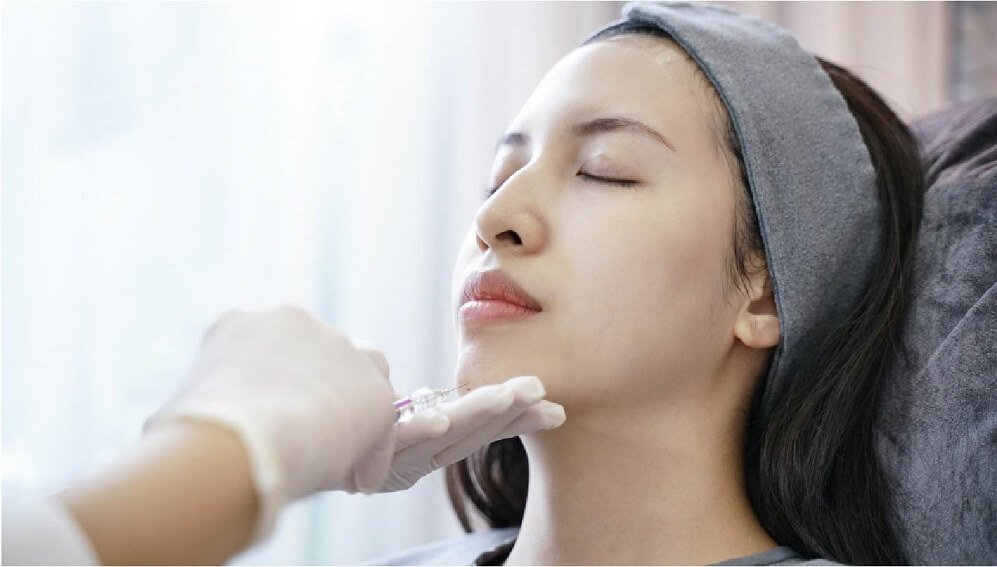Chin filler have become increasingly popular in recent years as a non-surgical option for enhancing the chin’s appearance. Whether you’re looking to correct a weak chin, improve facial symmetry, or achieve a more defined jawline, chin filler can be a viable solution. In this article, we will explore everything you need to know about chin filler, including the procedure, expected results, potential risks, and more. Let’s dive into the world of chin filler before and after!
Understanding Chin Filler
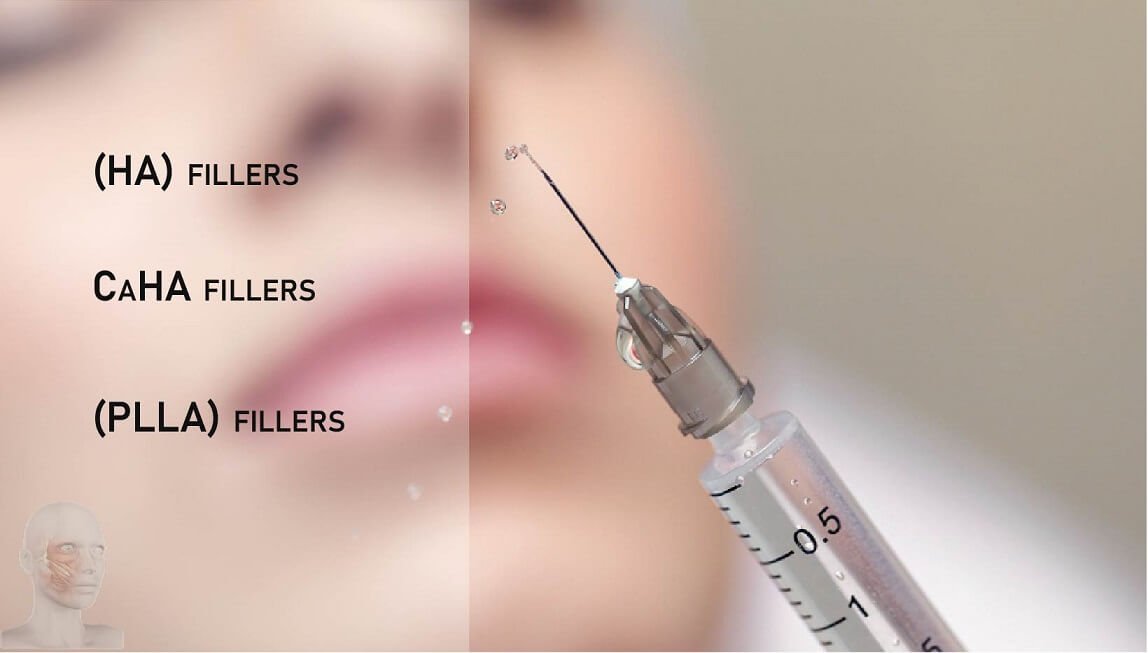
As part of facial treatment, Chin filler, also known as chin augmentation, are cosmetic procedures that involve the injection of dermal fillers to enhance the shape and definition of the chin. They are a non-surgical option for those seeking a more balanced and proportionate facial profile. Chin filler provide temporary results and are considered a safe and effective treatment. By understanding the process, benefits, potential side effects, and finding a qualified practitioner, individuals can make informed decisions about chin filler for a harmonious facial appearance.
What are Chin Filler?
When it comes to facial aesthetics, the chin plays a significant role in defining one’s profile. Chin filler, a non-surgical cosmetic procedure, have gained immense popularity as a safe and effective way to enhance the chin’s appearance.
Chin filler, also known as dermal fillers or injectable hyaluronic acid, are carefully injected into specific areas of the chin to add volume, reshape contours, and achieve a more balanced facial harmony. This minimally invasive procedure can address various concerns such as a weak or recessed chin, asymmetry, or an undefined jawline.
The advantage of chin filler lies in their ability to achieve natural-looking results without the need for surgery. The procedure is quick, virtually painless, and requires minimal downtime. With the expertise of a skilled injector, chin filler can precisely sculpt and augment the chin, enhancing the overall facial profile.
Whether you desire a more defined jawline or a stronger chin, chin filler offer a customizable solution tailored to your specific needs. Embrace the transformative power of chin filler and unlock a newfound confidence in your appearance.
Types of Dermal Fillers Used for Chin Augmentation
Several types of dermal fillers are commonly used for chin augmentation. Hyaluronic acid (HA) fillers, such as Juvederm and Restylane, are popular choices due to their natural compatibility with the body and temporary effects. They add volume to the chin, enhancing its projection and contour.
Another type of filler used for chin augmentation is calcium hydroxylapatite (CaHA), which stimulates collagen production and provides long-lasting results. Radiesse is a commonly used CaHA filler that helps improve chin definition and structure.
Poly-L-lactic acid (PLLA) fillers, like Sculptra, stimulate collagen production over time, gradually enhancing the chin’s shape and contour.
Your choice of filler will depend on various factors, including the desired outcome, duration of results, and personal preferences. Consulting with a qualified aesthetic professional will help determine the most suitable filler for your specific chin augmentation goals.
How Do Chin Filler Work?
The procedure is relatively simple and quick. A skilled medical professional carefully injects the filler into specific points along the chin, taking into consideration the individual’s facial structure and desired results. The filler adds volume and supports the underlying tissues, lifting and sculpting the chin area.
One of the major advantages of chin filler is their temporary nature. While results can last anywhere from six months to a year, they are not permanent, offering individuals the flexibility to adjust their chin’s appearance as their preferences change over time.
Chin filler provide a safe and minimally invasive solution for those seeking a more defined chin without the need for surgery. However, it’s important to consult with a qualified professional to determine if chin filler are the right option for you.
Candidates for Chin Filler
Individuals with a weak chin or lack of definition in the lower face can benefit greatly from chin filler. Those who seek to restore facial symmetry, improve jawline contour, or enhance their profile can also consider this option. Additionally, chin filler can be an excellent choice for individuals looking to avoid the risks and downtime associated with surgery.
It is important to consult with a qualified medical professional to determine if you are a suitable candidate for chin filler. Factors such as overall health, skin elasticity, and specific aesthetic goals will be taken into consideration. Remember, chin filler offer a temporary solution, typically lasting several months to a year, and may require maintenance treatments to maintain the desired results.
Choosing the Right Provider for Chin Filler
When considering chin filler to enhance your facial profile, it is crucial to select the right provider who possesses the necessary expertise and experience to ensure optimal results. With numerous options available, it can be overwhelming to navigate through the choices. However, taking the time to research and make an informed decision will prove invaluable in achieving a satisfying outcome.
First and foremost, prioritize safety and quality by selecting a provider who is licensed and certified. Look for professionals who specialize in cosmetic procedures and have a solid track record of successful chin filler treatments. Conduct thorough research, read reviews, and ask for recommendations from trusted sources to gain insights into their reputation and client satisfaction.
Experience is another key factor to consider. Choose a provider who has substantial experience specifically in administering chin filler. An experienced professional will possess a deep understanding of facial anatomy, ensuring precise placement and natural-looking results. Additionally, they will be able to anticipate and handle any potential complications effectively.
Moreover, consider the provider’s approach to patient care and communication. A reputable practitioner will prioritize a thorough consultation, discussing your aesthetic goals and expectations while also providing honest and realistic feedback. They should address any concerns you may have, ensuring you feel comfortable and confident throughout the process.
Lastly, take into account the clinic’s facilities and the products they use. A reputable provider will operate in a clean and sterile environment, adhering to the highest standards of safety and hygiene. They will only use FDA-approved products of high quality, ensuring the best possible outcomes.
By carefully evaluating these factors and selecting a provider who excels in safety, experience, communication, and quality, you can confidently embark on your chin filler journey, knowing you are in capable hands. Remember, choosing the right provider is a crucial step towards achieving the aesthetic enhancements you desire.
Preparation for Chin Filler Treatment
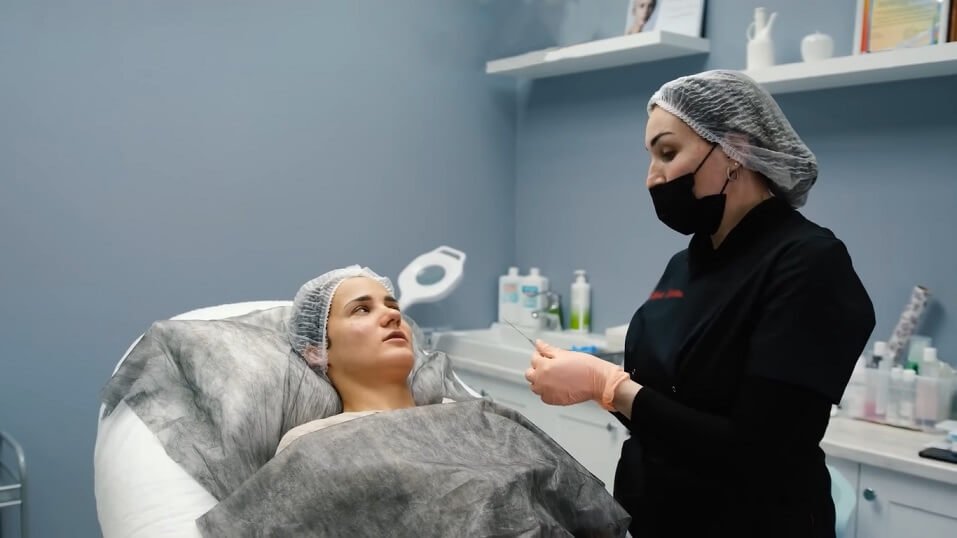
If you’re considering this treatment, it’s essential to understand the preparation involved to ensure a successful and satisfying outcome. In this part,, we will explore the key aspects of preparation for chin filler treatment, including consultation and assessment, pre-treatment instructions, and managing expectations.
Consultation and Assessment
Before undergoing any cosmetic procedure, it is crucial to have a thorough consultation and assessment with a qualified and experienced practitioner. During this initial step, you will have the opportunity to discuss your goals, concerns, and expectations regarding the chin filler treatment. The practitioner will carefully evaluate your facial structure, skin condition, and chin anatomy to determine the most suitable approach for achieving the desired results.
The consultation will also involve a discussion of your medical history, including any allergies, previous cosmetic procedures, or medications you may be taking. This information helps the practitioner ensure your eligibility for the treatment and identify any potential contraindications or risks.
Additionally, the practitioner may take photographs or use computer imaging technology to provide a visual representation of how the chin filler treatment may enhance your appearance. This step allows you to have a clearer understanding of the potential outcomes and make an informed decision.
Pre-Treatment Instructions
To optimize the results of your chin filler treatment and minimize the risk of complications, it is essential to follow the pre-treatment instructions provided by your practitioner. These instructions may vary depending on individual circumstances, but some general guidelines can be outlined.
First and foremost, it is advisable to avoid any blood-thinning medications, such as aspirin or ibuprofen, for at least a week prior to the treatment. These medications can increase the risk of bruising or bleeding at the injection site. If you are on any prescription medications, it is vital to consult with your healthcare provider before making any changes.
It is also recommended to refrain from consuming alcohol for a few days before the treatment, as alcohol can dehydrate the body and make the skin more susceptible to bruising and swelling. Staying well-hydrated by drinking plenty of water is encouraged.
In some cases, your practitioner may advise you to discontinue the use of certain skincare products, such as retinoids or exfoliants, before the treatment. These products can sensitize the skin and potentially interfere with the effectiveness of the chin filler.
Lastly, it is essential to arrive at the clinic with a clean and makeup-free face on the day of your appointment. This allows the practitioner to assess your skin condition accurately and perform the treatment with precision.
Managing Expectations

Managing expectations is a crucial aspect of preparing for any cosmetic procedure, including chin filler treatment. While chin filler can effectively enhance the shape and contour of the chin, it is important to have realistic expectations about the results.
During the consultation, your practitioner will discuss the potential outcomes and explain the limitations of the treatment. It is vital to understand that chin filler can provide noticeable improvements, but they may not entirely transform your appearance or result in a dramatically different chin shape.
Furthermore, the duration of the results can vary from person to person. Typically, chin filler can last anywhere from six months to a year, depending on factors such as the type of filler used, individual metabolism, and lifestyle factors. Your practitioner will provide you with a clear understanding of the expected longevity of the results and discuss the possibility of maintenance treatments if desired.
It is also essential to be aware of the potential side effects associated with chin filler treatment. These may include temporary swelling, bruising, redness, or tenderness at the injection site. Your practitioner will discuss these possibilities during the consultation.
Chin Filler Procedure
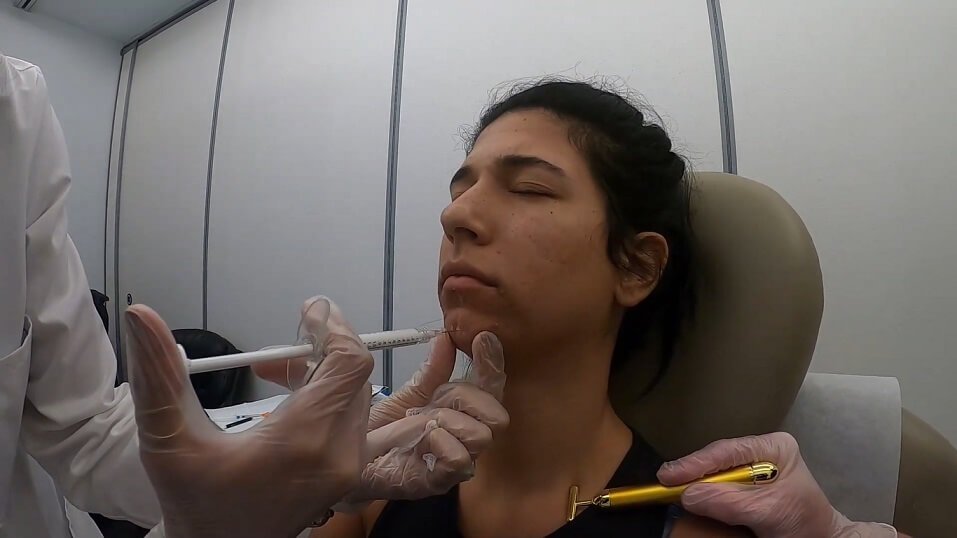
Anesthesia Options
Anesthesia plays a crucial role in ensuring patient comfort during the chin filler procedure. There are typically two main anesthesia options available: topical anesthesia and nerve blocks.
Topical anesthesia involves the application of a numbing cream to the treatment area, which helps to minimize any discomfort during the injections. It is a common choice for patients who have a low pain threshold or are sensitive to injections.
Nerve blocks, on the other hand, involve the injection of a local anesthetic into specific nerves surrounding the chin. This numbs the entire area, providing a more profound level of pain relief. Nerve blocks are often preferred for patients undergoing extensive chin filler treatments or those who may be more sensitive to pain.
Injection Techniques
Chin filler injections require a precise technique to achieve optimal results. The choice of injection technique may vary depending on the patient’s aesthetic goals and the expertise of the injector. Some common injection techniques used during chin filler procedures include:
- Linear threading:In this technique, the filler is injected in a linear pattern along the chin to create a smooth and contoured appearance.
- Cross-hatching: Cross-hatching involves injecting the filler in a crisscross pattern, which can help improve the overall symmetry and definition of the chin.
- Serial puncture:This technique involves multiple small injections across the chin to distribute the filler evenly and achieve a natural-looking result.
- Blunt cannula:A blunt cannula is sometimes used instead of a traditional needle. This technique minimizes the risk of bruising, swelling, and damage to blood vessels, providing a safer and more comfortable experience.
The choice of injection technique will be determined by your healthcare provider based on your specific needs and desired outcomes.
Duration of the Procedure
The duration of a chin filler procedure can vary depending on several factors, including the complexity of the treatment and the individual patient. On average, the procedure itself typically takes around 15 to 30 minutes. However, it’s important to note that additional time may be required for consultation, preparation, and post-procedure care.
During your initial consultation, your healthcare provider will evaluate your chin’s condition, discuss your aesthetic goals, and create a personalized treatment plan. This pre-procedure phase is crucial for ensuring that you achieve the desired results.
On the day of the procedure, the actual injection process is relatively quick. Afterward, you may be advised to remain in the clinic for a short observation period to ensure that there are no immediate complications or adverse reactions.
What to Expect During the Procedure
Knowing what to expect during the chin filler procedure can help alleviate any concerns or uncertainties you may have. Here is a general overview of what typically happens during the procedure:
Cleansing and marking:
Before the injections begin, the chin area will be thoroughly cleansed to minimize the risk of infection. The healthcare provider may also mark specific injection points on your chin as a guide for precise placement.
Numbing the area:
Depending on the chosen anesthesia option, a numbing cream or a nerve block will be administered to ensure your comfort during the procedure.
Monitoring and observation:
Throughout the procedure, the medical team will closely monitor your vital signs, including heart rate, blood pressure, and oxygen levels. This continuous observation ensures your well-being and enables them to respond quickly to any changes or complications that may arise.
Post-procedure recovery:
After the procedure is completed, you will be moved to a recovery area where you will be closely monitored until the effects of the anesthesia wear off. The healthcare team will provide appropriate pain management and address any immediate concerns. Depending on the procedure, you may be discharged the same day or kept for further observation and recovery.
Post-procedure instructions:
Before leaving the facility, you will receive detailed instructions on post-procedure care. This may include information about medications, activity restrictions, wound care, and follow-up appointments. It is crucial to follow these instructions to promote optimal healing and minimize the risk of complications.
Possible Side Effects and Complications
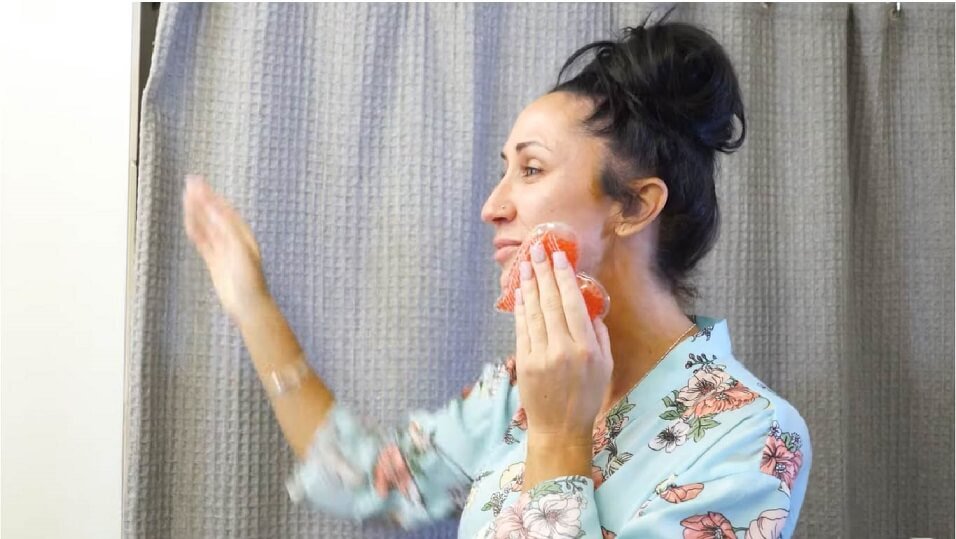
Injection Site Reactions
After getting chin filler injections, it is normal to experience some mild swelling, redness, and bruising at the injection site. These reactions are typically temporary and subside within a few days. However, in rare cases, individuals may develop more severe swelling, persistent pain, or infection. It is crucial to report any unusual or prolonged symptoms to your healthcare provider.
Allergic Reactions
Although rare, some individuals may experience an allergic reaction to the substances used in chin filler. Allergic reactions can manifest as itching, rash, hives, or even difficulty breathing. If you have a history of allergies or have had previous allergic reactions to dermal fillers, it is important to inform your provider before undergoing the procedure. They can recommend alternative treatments or perform a patch test to assess your sensitivity.
Nerve Damage
The anatomy of the chin area contains numerous vital structures, including nerves. While skilled practitioners take precautions to avoid nerve damage, there is still a slight risk of unintentional nerve injury during the injection process. This can result in temporary or, in rare cases, permanent numbness, tingling, or muscle weakness in the chin or surrounding areas. To minimize this risk, it is crucial to choose a trained and experienced healthcare professional to perform the chin filler procedure.
Migration and Asymmetry
Occasionally, chin filler may shift or migrate from their original placement, causing asymmetry or an uneven appearance. This can occur due to factors such as incorrect injection technique, improper product selection, or excessive movement of the chin area shortly after the procedure. It is important to follow the post-treatment instructions provided by your practitioner carefully and avoid excessive pressure or manipulation of the chin area.
Granuloma Formation
In rare instances, the body may react to the chin filler material by forming small nodules called granulomas. Granulomas are typically non-painful, firm lumps that can develop weeks or even months after the injection. Treatment options for granulomas may include the use of medication, massage, or, in severe cases, surgical removal. To reduce the risk of granuloma formation, it is essential to choose an FDA-approved filler and ensure that the procedure is performed by a qualified professional.
When to Seek Medical Attention
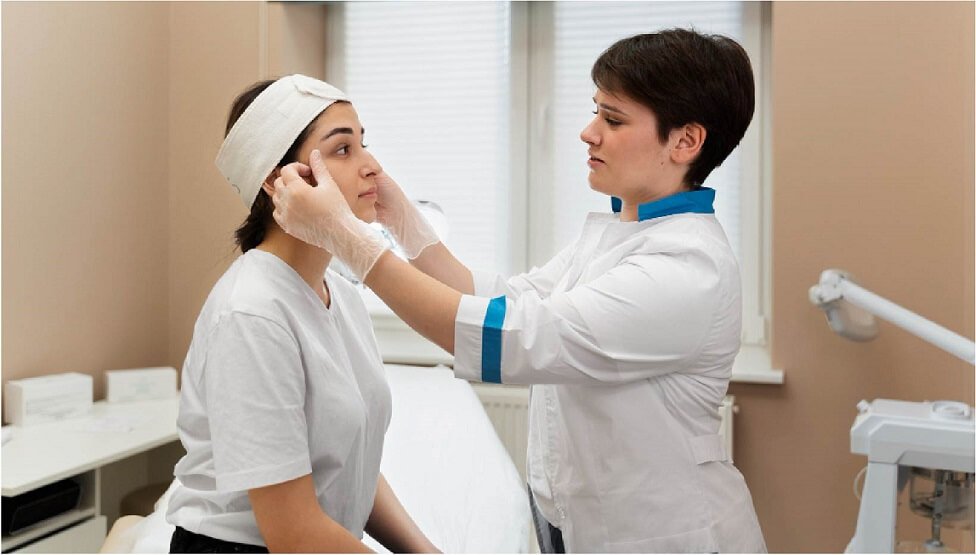
Severe or Prolonged Pain:
Some discomfort and tenderness are common after chin filler injections. However, if you experience severe or persistent pain that worsens over time, it could be a cause for concern. This could be a sign of infection, nerve damage, or an adverse reaction to the filler substance. Seeking medical attention is crucial to identify the underlying cause and receive appropriate treatment.
Excessive Swelling:
Mild swelling is a normal response to chin filler injections and usually subsides within a few days. However, if you notice excessive or disproportionate swelling that continues to increase instead of improving, it may indicate an inflammatory reaction or an infection. Consult a medical professional to evaluate the situation and determine the appropriate course of action.
Allergic Reactions:
Although rare, allergic reactions to dermal fillers can occur. If you develop symptoms such as hives, itching, rash, difficulty breathing, or facial swelling, it could be an allergic response to the filler substance. These symptoms may occur immediately or a few days after the procedure. Seeking immediate medical attention is crucial to manage the allergic reaction effectively.
Persistent Bruising or Discoloration:
Bruising and mild discoloration are common side effects of chin filler injections. They typically resolve within a week or two. However, if you notice persistent or worsening bruising, or if the area becomes significantly discolored, it could indicate a hematoma or a vascular injury. It is essential to consult a healthcare professional promptly to rule out any serious complications.
Irregularities or Lumps:
Chin filler are used to create a smooth and even contour. If you notice any irregularities, lumps, or asymmetry in the treated area, it may indicate a problem with the filler placement or distribution. Seeking medical attention is necessary to evaluate the situation and discuss possible corrective measures with a qualified injector or dermatologist.
Open Sores or Infection:
If you notice any open sores, excessive redness, warmth, or pus-like discharge from the injection site, it could indicate an infection. Prompt medical attention is essential to prevent the infection from spreading and to receive appropriate treatment, such as antibiotics or drainage if necessary.
Unusual or Persistent Side Effects:
While some mild side effects such as mild swelling, bruising, or tenderness are expected after chin filler injections, persistent or unusual side effects should not be ignored. These may include numbness, loss of sensation, difficulty swallowing, or any other unusual symptoms that concern you. Consulting a healthcare professional will help determine the cause and address any potential complications.
Before and after results of chin filler

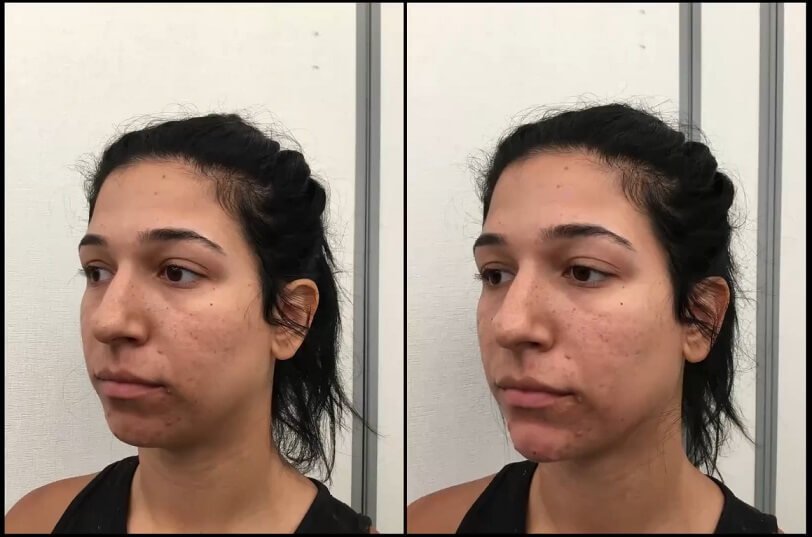
Frequently Asked Questions (FAQs) About Chin Filler
Chin filler, also known as dermal fillers or injectable fillers, are non-surgical cosmetic treatments used to add volume, shape, and contour to the chin area.
These fillers consist of a gel-like substance, typically made of hyaluronic acid, which is injected into specific areas of the chin to create a more defined and balanced appearance.
How do chin filler work?
Chin filler work by replenishing lost volume and enhancing the contours of the chin. The gel-like substance is injected into the targeted areas, such as the chin crease or along the jawline, to provide a natural-looking augmentation.
The fillers help to stimulate collagen production, which further improves the elasticity and firmness of the skin in the treated area.
Are chin filler safe?
Yes, when performed by a qualified and experienced medical professional, chin filler are generally considered safe.
However, like any cosmetic procedure, there are potential risks and side effects associated with chin filler, such as swelling, bruising, or infection. It is crucial to choose a reputable provider and discuss your medical history and expectations during the consultation to ensure your safety.
How long do chin filler last?
The duration of chin filler can vary depending on the type of filler used and individual factors. Generally, hyaluronic acid fillers can last between six months to a year. Over time, the body naturally breaks down the filler, and maintenance treatments may be required to sustain the desired results.
Is the procedure painful?
Chin filler injections are typically well-tolerated by most patients. The fillers often contain lidocaine, a local anesthetic, which helps minimize any discomfort during the procedure. Additionally, medical professionals may use topical numbing creams or ice packs to further reduce any potential pain or discomfort.
Are there any side effects?
While chin filler are generally safe, some common side effects may occur, including temporary redness, swelling, bruising, or tenderness at the injection site. These effects usually subside within a few days. Rarely, more severe complications, such as infection or allergic reactions, may occur. It is essential to discuss the potential risks and side effects with your provider beforehand.
How long is the recovery period?
One of the advantages of chin filler is that there is minimal downtime involved. Most individuals can resume their regular activities immediately after the procedure.
However, it is advisable to avoid intense physical exercise, excessive sun exposure, and facial massages for the first 24 to 48 hours after treatment to minimize potential swelling or bruising.
Can chin filler be reversed?
In certain cases, chin filler can be reversed using an enzyme called hyaluronidase. This enzyme can dissolve hyaluronic acid fillers and restore the original appearance.
However, it is crucial to consult with a qualified medical professional for proper assessment and to discuss the potential risks and benefits of reversal.
Chin filler offer a non-surgical option to enhance your chin and jawline, achieving a more balanced and aesthetically pleasing facial profile. By understanding the procedure, its benefits, and potential risks, you can make an informed decision about whether chin filler are the right choice for you. Consult with a doctor
Conclusion
Chin filler can be a transformative solution for individuals seeking to enhance their chin’s appearance without undergoing surgery. By understanding the procedure, risks, recovery process, and expected results, you can make an informed decision about whether chin filler are right for you. Remember to consult with a qualified professional to ensure the best possible outcome. Embrace the potential of chin filler and unlock a more confident, defined chin that complements your facial features beautifully.
